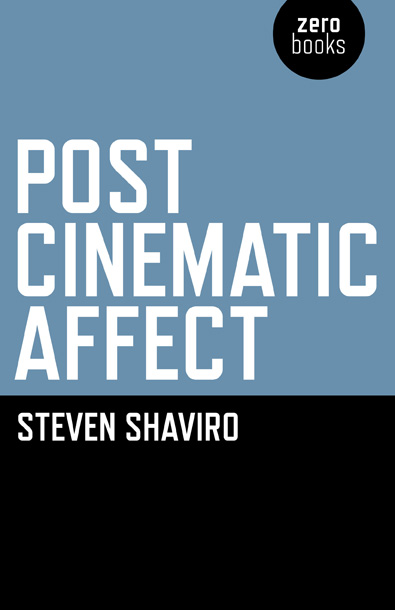This notice serves to advertise both a “medium” and its “message” (which, according to McLuhan is always another medium–and this is certainly true in this case). If you don’t already know the website In Media Res (the “medium” in question), you should definitely take a look. It’s an innovative and exciting project that works like this: each week, a group of people deal with a given media-related topic or theme (the “message,” so to speak) through the mixed media of a short video clip (30 sec. to 3 minutes in most cases) and a short textual accompaniment (between 300 and 350 words)–the medium’s message, itself media-oriented, is very literally composed of other media.
Now, the message has arrived that next week, the topic of discussion will be Steven Shaviro’s Post-Cinematic Affect, about which I recently posted. I quote here from Adrian Ivakhiv’s blog immanence:
Next week, the Media Commons project In Media Res will be hosting a theme week on Steven Shaviro’s Post-Cinematic Affect (which I wrote about here).
I’ll be guest curating the discussion on Wednesday, and Steven will be responding on Friday.
Here’s the full line up:
- Monday August 29: Elena Del Rio (University of Alberta, Canada)
- Tuesday August 30: Paul Bowman (Cardiff University, UK)
- Wednesday August 31: Adrian Ivakhiv (University of Vermont, USA)
- Thursday September 1: Patricia MacCormack (Anglia Ruskin University, UK)
- Friday September 2: Steven Shaviro (Wayne State University, USA)
To participate you will need to take a moment to register here.
This promises to be an exciting event, and it should be especially interesting to members of the Film & TV Reading Group. Mark your calendars!

